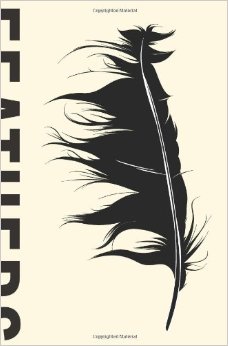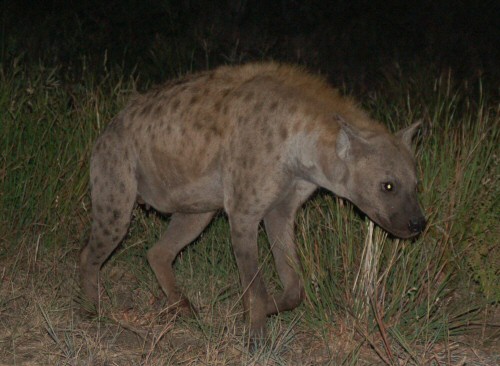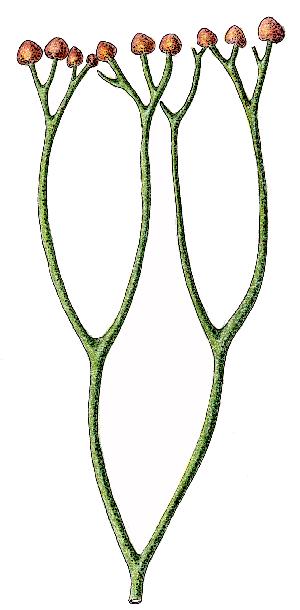Ah, Powell’s sale racks, thou art my weakness. Seriously, an entire wall of books with the covers facing out is a great way to catch my attention, and the simple black and white cover of Thor Hanson’s Feathers was almost the perfect Lupa bait. It was effective enough to make me break my promise to myself that I somehow would walk out of the City of Books empty-handed, though I’m glad for the indulgence.
You see, feathers and I have a history. I’ve been making my hide and bone (and feather) art for almost two decades, and in those years I’ve been able to make creations with a variety of plumes: turkey, pheasant, rooster, pigeon, and others. I also know way more about the legalities of feathers and which ones are and aren’t legal to possess than most people because I make it a habit to know the laws about these things. Plus I’ve always loved animals, and nature in general, ever since I was old enough to toddle around the yard, and birds were some of my first discoveries in the wide world outdoors.
So if I was ever going to break a promise to myself over a book, I could have done much worse than this one. Feathers are well-nigh ubiquitous, from pet birds to down pillows to the pigeon feather that’s been sitting for days under a bush by my apartment building. But because the feather fancy is rather a niche market left mostly to fly tyers, taxidermists, and costumers, most people never really get to examine these marvels of natural engineering up close and personal. It’s a rare bird (heh) who really takes the time to get to know their shapes and textures, purposes and colors, and I feel everyone else is missing out.
But enough about me–what about the book? Well, in the grand tradition of Incredibly Interesting Books on Niche Topics You Never Thought You’d Read About, it’s about as perfect an introduction to the feather as one could hope for. Hanson starts off with a thorough exploration of the evolution of feathers–or, rather, the multiple theories thereof. See, the discovery of certain dinosaurs having feathers opened up a whole new can of worms, each one vociferously defending its stance on the “ground up” or “tree down” approach to how flight developed, or what structures evolved first, and so forth. Right away the author makes it clear that feathers are no simple topic.
This is coupled with more information on the feathers themselves, what they’re made of and how they grow. There are some pretty incredible revelations about their ability to insulate a bird–and just how miraculous it is that an animal wearing a down comforter in the middle of summer doesn’t simply self-broil and save the predators the trouble of preparing dinner. Feathers can, depending on their structure, slough off water or absorb it, and how they got to be that way is a pretty good story I’ll leave to the author to describe in detail.
There’s always the human element, though, and feathers have quite the long relationship with Homo sapiens sapiens (and possibly a few of our relatives, too). The latter part of the book is dedicated to the things we do with down and their ilk, and so we’re treated to tours of several industries ranging from the costuming of Vegas showgirls to the now almost-defunct writing quill trade. I never realized just how much of a fad fly-tying was in the late 19th century, nor that the modern trade in dyed feathers is in an impressively small number of hands. And I got to find out these and other “Well, huh, I never thought of that” moments in pages of sometimes LOL-inducing, occasionally cringeworthy, encounters with a wide cast of characters dedicated to their respective trades. Even if all you’re looking for is a good story, Feathers has them aplenty.
But it’s the context that I value the most. I’ve seen feathers treated as part of discussions of bird flight and animal parts laws, but never were they drawn out on their own to such a degree. Instead of being part of someone else’s story, the humble feather gets to take center stage, and it’s caused me to look at my own art stock and personal collection rather differently. I’ve also found myself paying more attention to the individual feathers of birds when I see them outside while hiking or wandering my neighborhood, and while I have a rather untrained eye, I’m starting to notice details about how they move that I’d missed before.
And I think that’s the best takeaway from this book. If you get nothing more out of it, then at least take the ability to look at feathers with a more appreciative view. We spend entirely too much time taking just about everything in our lives for granted, and if one book can make something as ordinary as a molted pigeon feather seem like the finest miracle nature ever evolved, imagine how different the world might look when we expand our understanding and consideration of other common things we encounter every day.
So I definitely recommend this to my fellow feather artists, whether you make fans or taxidermy or pretty feathered hats. And nature-lovers in general may find it a good addition to the reading pile. But I also suggest it for anyone wanting to fill a couple of quiet evenings with a well-balanced read, or those facing a long flight or bus ride. It’s a book that flows well, that informs, and that’s very good at keeping the reader’s interest. Plus how else will you find out what sort of feather the author came home with after a trip to visit family in Canada?
You can find out more information and order a copy of your own here; it’s also on Amazon and Powells’ websites, and you can ask for it at any indy book store. Extra awesomeness and incentive to buy: the author (like yours truly) has an appendix of recommended nonprofit organizations in the back of the book, and donates part of the proceeds to these groups.






